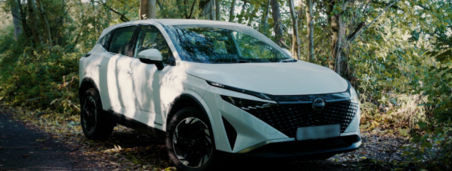Winter Driving: Weighing Up the Impact of Snow and Ice on UK Motoring

Although bookies have long been waiting on a white Christmas, the winter months after New Year have seen their fair share of snowfall. And just about every other adverse condition.
February 2018’s ‘Beast from the East’, for example, brought 70mph winds and 20-odd inches of snow. Granted, that’s an extreme example, but generally we aren’t well equipped to tackle even the mildest of snow or rainfall.
So, we’ve done some digging on the data and pulled out how much the UK’s biggest cities are affected between December and March.
Do some areas of the UK fare better than others?
| UK road accidents in wintery conditions 2015-2019 | |||
| City | Accidents by rain/flooding | Accidents by snow/ice | As a % of all road accidents |
| Glasgow | 1,906 | 106 | 38.0% (5,301) |
| Manchester | 1,213 | 31 | 28.3% (4,389) |
| Sheffield | 1,376 | 82 | 27.6% (5,284) |
| Edinburgh | 1,207 | 78 | 27.6% (4,657) |
| Bristol | 1,147 | 38 | 25.1% (4,727) |
| Leeds | 2,031 | 123 | 25.0% (8,615) |
| Birmingham | 3,171 | 152 | 24.2% (13,718) |
| Bradford | 1,102 | 119 | 23.4% (5,208) |
| Liverpool | 1,122 | 25 | 23.2% (4,936) |
| London | 23,401 | 780 | 18.8% (128,449) |
| Average | 3,768 | 153 | 21.2% (18,528) |
Data from Department for Transport and Office for National Statistics, using adjusted accidents figures.
Despite us all sitting on the same rock in the North Sea, with a relatively even climate, the results differ among the UK’s most populous cities. Glasgow tops the list with a baffling 38% of accidents on wet, flooded, snowy or icy roads – a whole 10% higher than Manchester in second.
In tenth is London, with flooding and ice accounting for not even 20% of accidents, despite being far and away when it comes to total accidents in tricky weather – there have been over 24,000 of them.
No matter where you are, however, it’s important to prep for the winter months, says Duncan McClure Fisher, MotorEasy founder: “Wintery conditions clearly account for a large portion of UK road accidents. On average, more than 20% of them occur on wet or icy roads, but for some cities the figures are even more alarming — jumping to nearly 30% in Manchester and 40% in Glasgow.
“Having your car properly maintained and serviced can keep it in its best condition ahead of the winter months, and if you are involved in a bump or a scrape, repair plans can help with the cost.”
Staying safe on the road
Along with maintaining your car and keeping up to date with winter health checks, there are other things you can do to tackle the worst of the weather. And the first step comes before you’re even behind the wheel:
Prepare – in case of a breakdown or accident, stock your car with some supplies to help stay warm or keep you on the move. A few blankets, waterproof jackets and even a handpump could come in handy in the event of a puncture, for example. For longer journeys especially, do the usual checks on fluid levels and tyre pressures – a car’s traction works differently on different surfaces.
Set off early – give yourself extra travel time in tricky conditions, as slow-moving traffic of course means delays. You might need a few minutes to de-ice the car, too.
Stick to the main roads – these are more likely to be cleared by gritters and other traffic.
Slow and steady – get underway in second gear, which gives the lowest chance of wheelspin, and keep to a low speed if you can. Check for a ‘winter mode’ if you drive an automatic, as this uses the lower gears.
Even more so on hills – keep your distance and again stick to low gears, as this will help control the car’s descent and apply more torque when ascending. That said, it’s best to avoid hills in heavy snow or ice if you can.
Gently on the brakes – avoid overuse of the brakes if you can help it, as it’s best to keep the wheels turning. Pressing too firmly could stop them, while the momentum could carry the car into an uncontrolled slide.
Know your car – many cars have assistive features like anti-lock braking systems (ABS) and traction control, which help a car stop quickly and maintain control. Cars without these features, however, require a different approach – you may need to pump the brakes to slow on ice if you don’t have ABS.
Read the road – as well as looking out for pedestrians and other drivers, you should be aware of road signs. These let you know if you’re approaching an incline or if the road surface is uneven, for example.
Park on a level surface – when you reach your destination, try to park on a flat and level surface. This reduces the risk of your car sliding and will also make it easier to set off again.
Safety first – if the weather’s especially bad and the journey isn’t essential, don’t risk it. If you really need to go out, consider public transport.
For more automotive insight and features, make sure to keep an eye on the MotorEasy news page.







